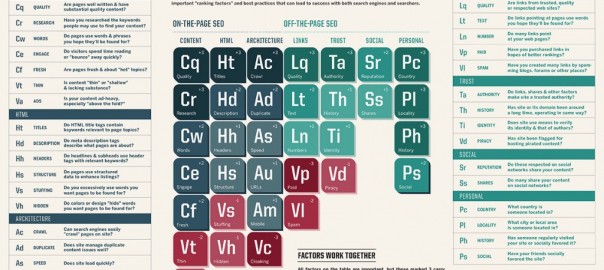Google’s changes to its search algorithm have been well documented, and it’s been a busy few years – we’ve had the Penguin and Panda updates along with Hummingbird and Pigeon. The changes are keeping SEO experts and brands on their toes as we all adjust our sites on a moving target.
Below are some key factors that we’re watching in 2015 as Google is experimenting with some new and old ranking influences for the year.
Mobile. Since mobile search is growing astronomically, Google is putting more emphasis on delivering the best user experience possible on mobile devices. Google has been penalizing sites that provide a bad experience to mobile searchers, and now the company is testing providing a boost for those serving up a great experience. By having a responsive site with fast load times and mobile features, sites can earn Google’s mobile-friendly label for special treatment within its ranking algorithm. Companies can use Google’s tool to see how mobile-friendly their site is: https://www.google.com/webmasters/tools/mobile-friendly/.
Multimedia Content. Google is placing more importance on featuring a range of content such as video, graphics, photos, PDFs, etc, on sites. Sites that are text heavy will need to be augmented with other media and content types. A range of content is not only effective from an SEO perspective but also drives a better user experience, which contributes to lower bounces and longer session duration.
Local SEO. Local search has always been important, and the Pigeon algorithm, launched in 2014, has taken it to a whole new level of specificity and accuracy. For sites this applies to, local signals need to be included when optimizing. Local signals are city, state and verbiage that relates a specific area. Including the address in the footer as well as somewhere in the copy counts. The alt text of images and image file names can be optimized to include the city or state as well. Google also wants to see more positive reviews on local listings. This is particularly important for Google Plus pages since they directly influence search rankings.
Session Duration. This is the amount of time a visitor spends on a website. Usually this is data people pay attention to in order to assess how engaging content is, etc. Now Google will be looking at it for the same purpose and use it as a ranking factor. The longer the site visit duration, the better.
Bounce Rate. A measurement of how quickly someone leaves your site, bounce rates are another indicator of the quality of content on the site. Usually the lower the better, but a high bounce rate isn’t always a bad thing. Sometimes visitors find the information they want quickly enough, such as a phone number, and then exit the site. If that’s not happening then the lower the better.
Content Updates. A staple of search rankings, content updates still matter today. Google tracks how often a site’s content is updated as a signal about how current the content is. How often Google returns to a site to crawl and index is a mystery, but updating content monthly or bi-monthly would be good start. If you don’t have a blog that’s regularly updated, you might consider it. Blogging is one of the easiest ways to have consistent content updates made to a site, and it’s a valuable content marketing tool.
Social Networks. According to Google, YouTube and Google Plus are the only social sites it allows to directly influence search rankings. There’s also indication Google might pay more attention to Facebook and other social sites in regards to ranking factors as well. When Google considers a social site in its algorithm, it uses social signals. Social signals can be how many +1s, likes, subscribers, how often content is updated, how complete the profile is and overall engagement on the platforms. M/C/C’s Public Relations Manager, Rebecca Renfroe, wrote about social media’s influence on SEO earlier in the year here.
Page Speed. Page speed remains a ranking factor in Google’s algorithm for both desktop and mobile sites. Faster load times will improve your ranking, as well as help you gain more organic traffic. Companies can evaluate their page speed by response times using a free website monitoring tool like Apica to pinpoint the weakest link in your site’s performance.
Link Earning. Google is leaning more towards link earning rather than link building. The algorithm is abandoning the value of linking to your site from forums and irrelevant sites and is placing more emphasis on quality links versus quantity. Coverage and site links from credible industry outlets make public relations not just a valuable tool for building credibility, but now site traffic and search rankings as well. Placing resources like infographics and white papers on other sites drives quality links that make it easy and encouraging for people to share your content since Google is paying attention to social sharing signals.
This is by no means an exhaustive list of factors to watch and consider for your SEO program. There are over 200 factors that influence search rankings in the Google algorithm and the sum total of how your site performs on them ultimately drives your SEO success. Take a look at the periodic table below from Search Engine Land for an interesting overview of “SEO Success Factors” and how they make up great SEO.

All of these factors work together in order to return the best possible results to the person doing the searching; and if you can get the balance right, you’ll see good results. Today’s site owners, content producers, SEO professionals and publishers have to concentrate on providing quality content from quality sources, which Google has always valued.
This was previously published to The M/C/C Blog.
(230)




